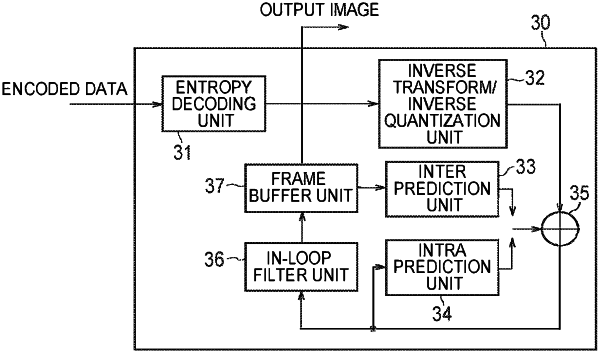| CPC H04N 19/44 (2014.11) [H04N 19/105 (2014.11); H04N 19/132 (2014.11); H04N 19/176 (2014.11); H04N 19/186 (2014.11)] | 3 Claims |

|
1. A moving picture decoder configured to decode encoded data, comprising a memory comprising programmed instructions stored in the memory and a processor configured to be capable of executing the programmed instructions stored in the memory to:
decode the encoded data to obtain a chrominance residual signal;
set a decoded luminance component of a prediction target block to a same number of samples as that of a chrominance component corresponding to the decoded luminance component of the prediction target block, and generate a luminance reference signal;
specify pixels of luminance having a minimum and maximum pixel values of the decoded luminance component adjacent to the decoded luminance component of the prediction target block, respectively, output luminance pixel values obtained from the specified pixels of luminance, and output chrominance pixel values obtained from pixels of pigment corresponding to the pixels of luminance;
derive a linear prediction parameter from the luminance pixel value, the chrominance pixel value, and a linear prediction model;
obtain a chrominance prediction signal by applying the linear prediction model based on the linear prediction parameter to the luminance reference signal; and
add the chrominance prediction signal and the chrominance residual signal to generate a reconstructed chrominance signal; wherein
a maximum value of a difference between a maximum value and a minimum value of the chrominance pixel value is clipped to a predetermined range, the decoded luminance component adjacent to the decoded luminance component of the prediction target block is set to the same number of samples as that of the chrominance component corresponding to the decoded luminance component of the prediction target block, the pixels having the minimum and maximum values of a luminance component are specified, respectively, and the linear prediction parameter being derived by shift processing are specified, respectively.
|